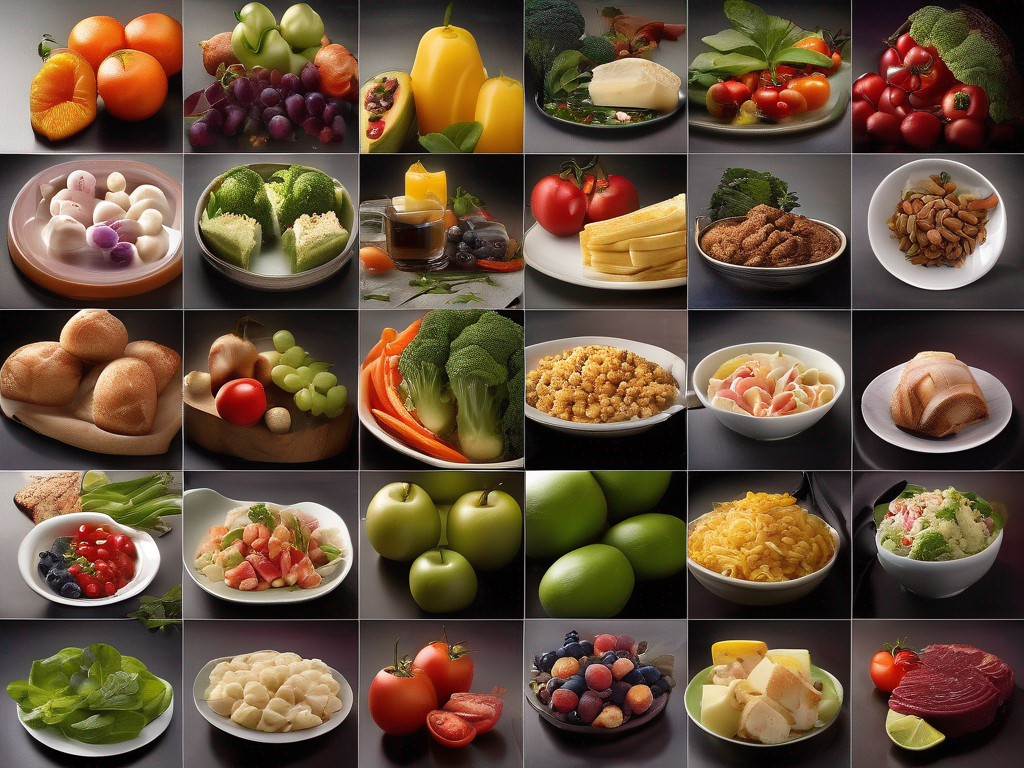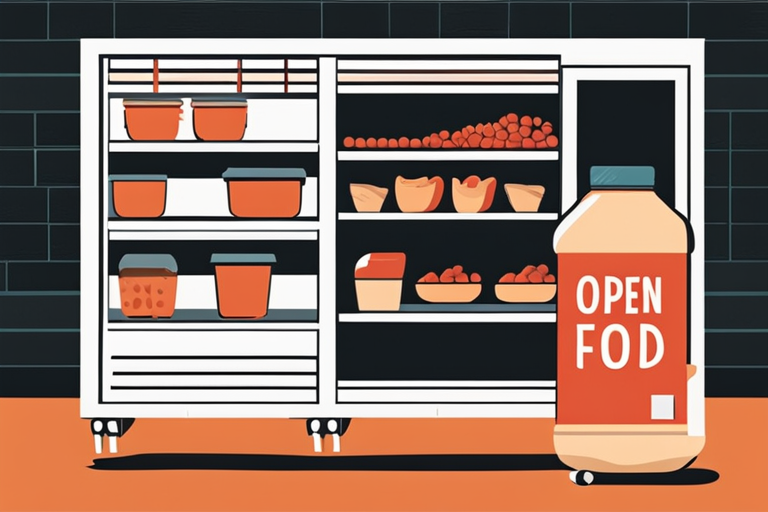
Ensuring Food Safety at Open Food Pantries: A Comprehensive Guide
Get Your Free Food Safety Cheat Sheet
30 most common foods with instant answers. Print it and stick it on your fridge—completely free!
# Ensuring Food Safety at Open Food Pantries: A Comprehensive Guide
In times of need, food pantries play a crucial role in providing essential support to individuals and families facing food insecurity. With the ongoing COVID-19 pandemic, the importance of food pantries has only grown, making it essential to ensure that these spaces maintain high standards of food safety and hygiene. In this guide, we will explore practical tips and safety information to help food pantries operate efficiently and safely.
## Importance of Food Safety at Food Pantries
Food safety is paramount when it comes to operating a food pantry. Ensuring that the food distributed is safe for consumption not only protects the health of those receiving the food but also upholds the credibility and integrity of the pantry itself. Here are some key reasons why food safety is crucial at food pantries:
### 1. Preventing Foodborne Illnesses
Ensuring proper food safety measures help prevent the spread of foodborne illnesses, which can have serious health consequences, especially for vulnerable populations.
### 2. Maintaining Nutritional Quality
Proper food storage and handling practices help maintain the nutritional quality of the food being distributed, ensuring that recipients receive the full nutritional benefits.
### 3. Building Trust
Adhering to high food safety standards helps build trust with the community and donors, demonstrating a commitment to providing safe and healthy food to those in need.
## Practical Tips for Maintaining Food Safety at Food Pantries
Maintaining food safety at food pantries involves a combination of proper storage, handling, and distribution practices. Here are some practical tips to help food pantries operate safely:
### Storage Guidelines
1. **Temperature Control**: Ensure that perishable items are stored at the appropriate temperature to prevent spoilage and bacterial growth.
2. **Separation**: Store raw meats separately from ready-to-eat items to prevent cross-contamination.
3. **Labeling and Rotation**: Clearly label all food items with expiration dates and rotate stock to use the oldest items first.
### Handling Practices
1. **Hand Hygiene**: Encourage staff and volunteers to practice proper handwashing techniques before handling food.
2. **Cleaning and Sanitizing**: Regularly clean and sanitize food pantry surfaces, equipment, and utensils to prevent the spread of pathogens.
3. **Personal Protective Equipment**: Provide staff and volunteers with appropriate PPE, such as gloves and masks, when handling food.
### Distribution Protocols
1. **Social Distancing**: Implement protocols to ensure social distancing during food distribution to minimize the risk of viral transmission.
2. **Contactless Delivery**: Consider implementing contactless delivery options to reduce person-to-person contact.
3. **Packaging**: Use secure and hygienic packaging to protect food items during distribution.
## Safety Information for Food Pantry Visitors
Visitors to food pantries also play a role in maintaining food safety. Here are some safety tips for individuals visiting food pantries:
### 1. Inspect Food Items
Before taking any food items, carefully inspect them for signs of damage or spoilage. Do not consume items that appear to be unsafe.
### 2. Store Food Properly
Once you have received food from the pantry, store it properly according to the instructions provided. Refrigerate perishable items promptly.
### 3. Wash Hands
After handling food items, wash your hands thoroughly with soap and water to prevent the spread of germs.
## Real-Life Scenarios: How Food Safety Matters
### Scenario 1: A Family in Need
Imagine a single mother, Sarah, who relies on her local food pantry to help feed her two young children. One day, she picks up a box of canned goods but doesn’t check the expiration dates because she’s in a hurry. After taking them home, she discovers that several cans are past their expiration date. Fortunately, she can return to the pantry and report the issue, reinforcing the importance of inspecting food items before leaving.
### Scenario 2: A Volunteer’s Experience
Tom, a volunteer at a food pantry, notices that some volunteers are not wearing gloves while distributing fresh produce. He recalls a training session where they discussed the importance of preventing cross-contamination. Tom decides to remind everyone about proper hand hygiene and the use of gloves, helping to protect the health of the clients they serve.
### Scenario 3: Seasonal Distribution Challenges
During the summer months, food pantries often receive an influx of fresh fruits and vegetables. While these items are nutritious, they can spoil quickly if not handled correctly. One pantry implemented a rapid turnover system, prioritizing the distribution of fresh produce to ensure it reaches families in time. This proactive approach not only minimizes waste but also maximizes the nutritional benefits for the community.
### Scenario 4: The Unexpected Surprise
A local bakery decides to donate leftover bread and pastries at the end of the day to a food pantry. During the donation, the bakery staff members ensure that the items are still within the safe consumption period but lack proper cooling in their delivery vehicle. The pantry staff, aware of food safety protocols, quickly assess the temperature of the items and decide to distribute only what is safely below the critical temperature, rejecting the rest. This scenario showcases the importance of vigilance and adherence to safety standards, even with seemingly fresh donations.
## Food Safety Science: Understanding Preservation Methods
Many people don’t realize how critical food preservation methods are in maintaining the safety and quality of food. For instance, pasteurization is a heating process that kills harmful bacteria in liquids like milk and juices. This is why it’s vital for food pantries to ensure they are distributing pasteurized products, particularly for vulnerable populations such as children and the elderly.
### Common Preservation Methods
1. **Canning**: This method involves sealing food in airtight containers and heating them to kill bacteria. Ensure that any canned goods have intact seals and are stored in a cool, dark place.
2. **Freezing**: Freezing slows down the growth of microorganisms. Encourage pantry visitors to use proper methods for thawing frozen foods to prevent bacterial growth, such as thawing in the refrigerator instead of at room temperature.
3. **Dehydration**: Removing moisture from food can prevent spoilage. Consider offering dried fruits and vegetables, which are nutritious and have a long shelf life.
4. **Fermentation**: This ancient preservation technique can also enhance food safety. Foods like pickles or kimchi undergo a fermentation process that not only preserves them but also adds beneficial probiotics. Educating pantry visitors about the benefits of fermented foods can enhance their diet quality.
## Common Mistakes in Food Safety Practices
Even with the best intentions, people often make mistakes regarding food safety. Here are a few common pitfalls to watch out for:
1. **Ignoring Expiration Dates**: Many individuals assume that food is safe to eat as long as it looks fine. However, expiration dates indicate when food is likely to be at its best quality or safe for consumption. Always adhere to these dates.
2. **Improper Thawing**: Thawing food on the countertop can allow bacteria to grow. It’s crucial to educate pantry visitors on safe thawing methods, such as in the refrigerator or in cold water.
3. **Overcrowding Refrigerators**: A common error is stuffing the fridge too full, which can obstruct air circulation. This impairs cooling efficiency and can lead to food spoilage. It’s important to educate pantry visitors about organizing their fridges for optimal airflow.
4. **Neglecting Cleanliness**: Sometimes, volunteers may become complacent about cleanliness, especially during busy distribution days. Stressing the importance of maintaining a clean environment, including regular handwashing and sanitizing surfaces, can prevent illness outbreaks.
## Expert Insights: Professional Food Safety Recommendations
Food safety experts emphasize the importance of training staff and volunteers. Regular workshops on food safety practices ensure that everyone is on the same page regarding hygiene protocols. Additionally, developing a food safety plan tailored to the specific needs of the pantry can streamline operations and ensure compliance with safety regulations.
### Tips from Experts:
- **Regular Audits**: Conduct regular audits of food safety practices to identify areas that need improvement.
- **Feedback Loop**: Create channels for clients and volunteers to provide feedback on food safety measures. This can help improve practices and address any concerns promptly.
- **Community Education**: Offer workshops for pantry visitors that educate them on safe food handling at home, emphasizing the importance of food safety beyond the pantry.
- **Emergency Preparedness**: Develop an emergency plan for food safety incidents, such as power outages or natural disasters, to ensure that food remains safe and viable.
## Enhanced Storage Methods
Food pantries can implement various storage methods to extend the life and safety of food products:
### 1. Vacuum Sealing
This method removes air from packaging, significantly extending the shelf life of foods. Encourage pantries to incorporate vacuum sealing for perishable items whenever feasible.
### 2. Use of Desiccants
For dry goods, consider using food-safe desiccants to absorb moisture and extend the shelf life of items like grains and flours. Educate pantry staff on how to safely store these items to prevent spoilage.
### 3. Proper Use of Containers
Encourage the use of airtight containers for bulk items. For example, rice and pasta can be stored in clear, sealable bins to keep them fresh and free from pests.
## Conclusion
Ensuring food safety at open food pantries is a shared responsibility that requires collaboration between pantry staff, volunteers, and visitors. By following proper storage, handling, and distribution practices, food pantries can continue to serve their communities safely and effectively. Remember, food safety is not just about providing food—it's about providing safe and nutritious food that promotes health and well-being. Together, we can make a difference in the lives of those we serve.

Authoritative Food Safety References
These agencies and university labs inform every tip and health precaution we publish.
USDA FoodKeeper – Cold Storage Guidelines
Official refrigerator, freezer, and pantry timelines maintained by the U.S. Department of Agriculture.
Visit USDA FoodKeeperFDA Produce Safety Rule & Grower Guidance
Field-to-fridge handling practices that prevent contamination of fruits, vegetables, and leafy greens.
Visit FDA Produce SafetyCDC Foodborne Illness Prevention Hub
Surveillance-backed guidance on pathogens, symptoms, and steps to reduce foodborne illness risk.
Visit CDC Food SafetyUC Davis Postharvest Technology Center
University research detailing optimal storage atmospheres for produce after harvest.
Visit UC Davis PostharvestPenn State Extension – Home Food Preservation & Safety
Peer-reviewed extension bulletins on safe canning, chilling, and reheating practices.
Visit Penn State ExtensionWhat are the best practices for handling and distributing food at open food pantries?
How can open food pantries prevent foodborne illnesses among their clients?
What should open food pantries do in case of a food safety emergency?
How can open food pantries stay up to date on food safety regulations and guidelines?
Get Your Free Food Safety Cheat Sheet
30 most common foods with instant answers. Print it and stick it on your fridge—completely free! Want more? Upgrade to the complete guide with 70+ foods.
Scan your food directly and get instant safety info using our AI-powered camera feature.